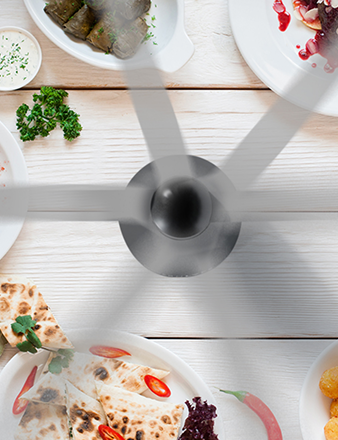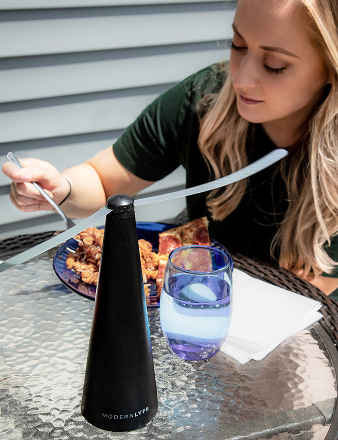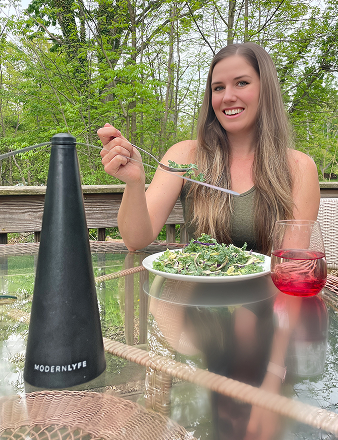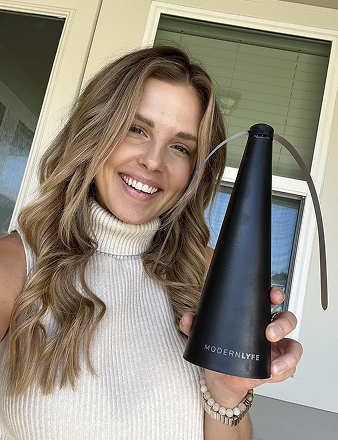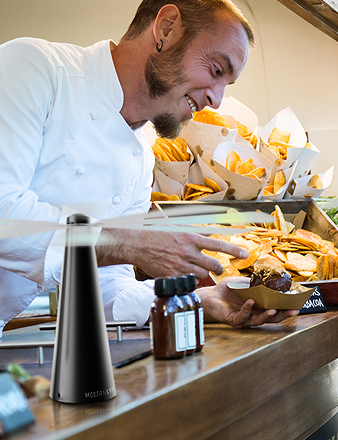Food waste is eating your profits. It's more than an environmental issue—it's a massive financial drain. Every spoiled vegetable, oversized portion, and unsold special is cash in the trash.
It’s a slow leak, easy to ignore in the daily grind. But the numbers don't lie.
Restaurants in the U.S. lose a staggering $25 billion in food every year. Here's the flip side: for every dollar a restaurant saves by cutting waste, it can see an average of $14 in additional revenue. That's not a small win; it's a game-changing ROI that goes straight to your bottom line.
More Than Just Scraps
The cost of discarded food is just the start. The real financial hit comes from hidden expenses that pile up long before anything reaches the bin.
- Wasted Labor: You pay your team to prep and cook food that never gets sold. That's payroll you'll never recover.
- Pointless Utilities: You're paying for the electricity to refrigerate ingredients and the gas to cook food that generates zero income.
- Rising Disposal Costs: The more you toss, the more you pay for waste removal. It's a simple, painful equation.
When you prioritize waste reduction, you do more than save on food costs. You tighten up your entire operation, from smarter inventory to a more efficient kitchen.
Turn a Problem into an Opportunity
Stop seeing food waste as a chore. Start treating it as a core business strategy. This isn't just about trimming costs; it's about building a smarter, more resilient business.
This approach also connects with today's diners. People want to support mindful, sustainable businesses. Highlighting your efforts can strengthen your brand and build a loyal following.
Plus, a well-run, low-waste kitchen is a sign of a healthy operation. Tidy storage and organized prep stations are not just efficient—they're essential for preventing common restaurant health code violations. At the end of the day, tackling food waste is one of the most direct paths to a more profitable restaurant.
Run a Food Waste Audit That Actually Works
You can't fix what you don't see. To cut food waste, you need a clear picture of what's being tossed, where it’s from, and why. A food waste audit gives you that data, turning guesses into a solid action plan.
Forget complex systems. The goal is simple: gather data you can use. A good audit creates a baseline, lets you track progress, set achievable goals, and celebrate wins when the numbers drop.
Set Up Your Audit
The most effective way to start is by sorting waste into clear categories. This isn't high-tech. It just takes a few dedicated bins and team buy-in for one to two weeks.
First, set up three clearly labeled bins in your kitchen and dish pit. This is where all food waste goes before it's weighed.
- Spoilage: For any ingredient that goes bad before it's used. Think wilted produce in the walk-in or expired yogurt.
- Prep Waste: All scraps from kitchen prep. This includes vegetable peels, meat trimmings, and burned sauce.
- Plate Waste: Everything that comes back from the dining room uneaten. It’s direct feedback on portion sizes and unpopular dishes.
At the end of each shift, your team weighs the contents of each bin and logs the numbers. This simple daily habit quickly builds a powerful data set that tells a story.
The data you collect isn't just numbers; it's a map pointing directly to where your profits are leaking. A spike in prep waste might signal a need for knife skills training, while a mountain of plate waste could be screaming that your portions are too big.
To get started, here’s how to categorize and track your waste to pinpoint problem areas.
Food Waste Audit Categories and Tracking Methods
| Waste Category | Description | Common Causes | How to Track |
|---|---|---|---|
| Spoilage | Ingredients that expire or go bad before use. | Over-ordering, poor stock rotation (no FIFO), improper storage. | Daily/weekly walk-in checks; weigh and log expired items. |
| Preparation Waste | Trimmings, peels, and mistakes during food prep. | Inefficient cutting techniques, not using whole ingredients. | Weigh dedicated bin for prep scraps from the line. |
| Post-Consumer Waste | Food left on customers' plates. | Oversized portions, unpopular dishes, poor quality. | Weigh dedicated bin for food scraped from plates in the dish pit. |
| Overproduction | Batch-cooked food that is never served. | Inaccurate forecasting, cooking too much for the buffet or line. | Weigh and log all food from the hot-hold that gets discarded. |
By tracking these specific areas, you can stop guessing and start making targeted, effective changes.
From Bins to Tech
While the three-bin method is a great, low-cost starting point, technology can offer deeper insights. For restaurants ready to invest, smart scales and specialized software can automate much of the tracking. These systems allow staff to categorize waste with a quick tap and generate detailed reports, saving labor and eliminating human error.
Some advanced AI platforms even use cameras to automatically identify what's being thrown away, giving you a granular view of your waste streams without anyone lifting a finger. To dive deeper, explore guides on how to calculate and reduce food waste in restaurants.
This infographic connects discarded food, lost revenue, and the opportunity for recovery.
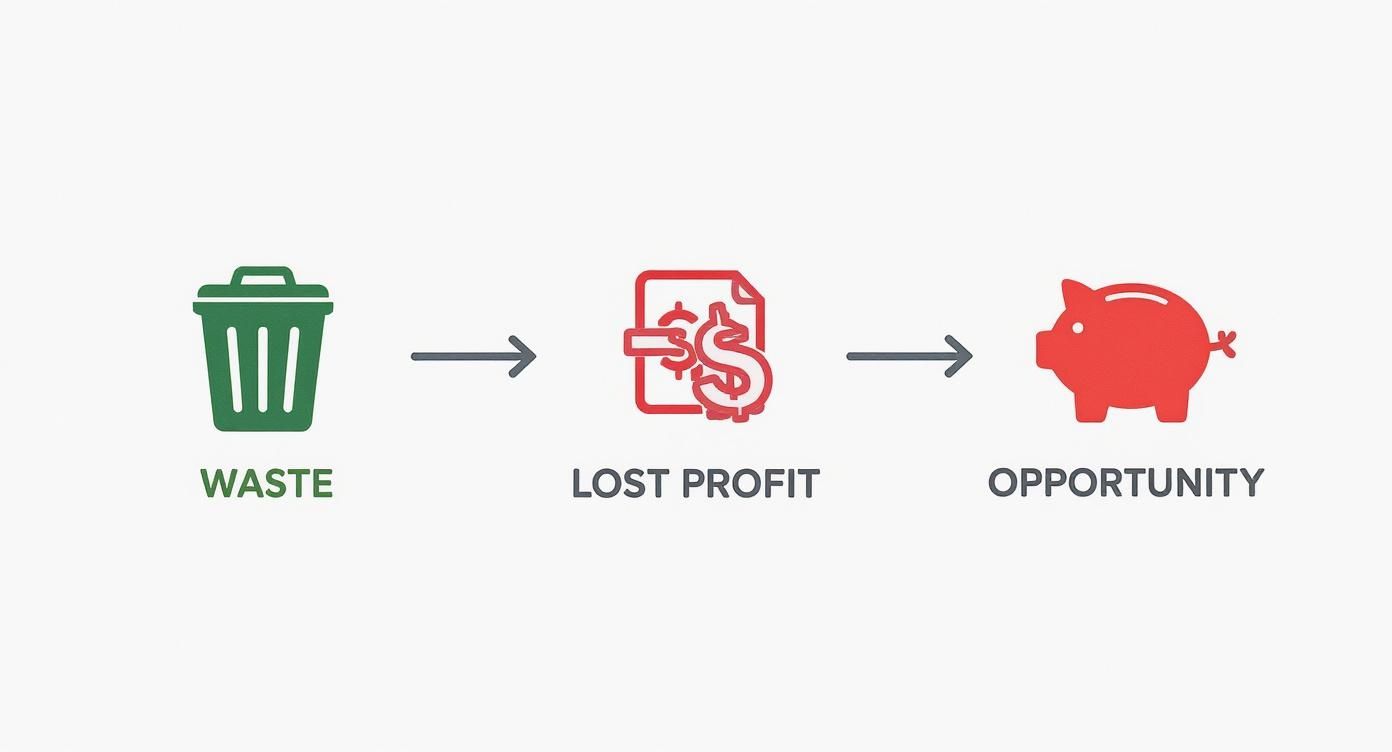
Think of it this way: every bin of waste is a hit to your finances, but it’s also a clear opportunity to tighten your operation and boost your bottom line.
Analyze the Data for Opportunities
After your audit period—a week or two is enough—dig into the numbers. Look for patterns. Is one category consistently heavier? Does waste spike on weekends or during a specific service?
If your spoilage bin is always full, that’s a major red flag for your inventory management. It points to over-ordering, poor stock rotation, or improper storage. Strict food safety protocols are non-negotiable here. For a refresher, our guide on what is HACCP food safety offers practical insights on preventing spoilage with systematic controls.
If prep waste is your biggest offender, look at what’s happening on the line. Are your cooks trained in root-to-stem techniques? Could those carrot peels become a fantastic vegetable stock for a soup special? This data empowers you to make small, targeted changes that add up to a huge impact.
A food waste audit isn't just another chore—it's one of the most powerful strategic tools you have for cutting costs and running a more profitable, sustainable restaurant.
Master Your Inventory and Purchasing
A surprising amount of food waste happens before an ingredient ever sees a cutting board. It's that forgotten case of asparagus in the back of the walk-in. The battle against waste begins with mastering your inventory and purchasing.
Sloppy ordering and a chaotic storeroom are silent profit killers. Every spoiled item is lost food cost, wasted labor, energy, and shelf space. Tightening up your purchasing isn't about being cheap—it's about running a smarter, more profitable kitchen.
The financial hit is bigger than most operators realize. A 2024 report found that 4% to 10% of all food bought by restaurants gets thrown out before it's even served. Moving from "gut-feel" buying to a proactive, data-driven strategy is one of the most powerful changes you can make.
Adopt a First-In, First-Out (FIFO) Mindset
The First-In, First-Out (FIFO) method is a cornerstone of kitchen management because it works. It’s a simple, effective system for ensuring older stock gets used before it spoils.
But knowing the acronym isn't enough. A successful FIFO system demands consistent, daily execution from your entire team.
- Label Everything. This is non-negotiable. All incoming products need a clear delivery date. A simple date gun or color-coded labels makes it easy for staff to see what to use first.
- Organize for Success. When stocking shelves, always place new items behind older ones. This setup makes it automatic for cooks to grab the right product, even during a dinner rush.
- Train and Reinforce. Weave FIFO into your team's daily routine. Mention items that need to be used in pre-shift meetings and challenge chefs to create specials around them.
Think of your walk-in cooler not as a static box, but as a living space with a constant, organized flow. Every item should have a home, and every team member should know the system.
This disciplined approach stops good food from expiring and turns potential waste back into revenue.
Let Sales Data Drive Your Orders
Are you still ordering based on last week's sales or a hunch? Guesswork is a recipe for waste. The secret to smart purchasing is in your own sales data—it can tell you exactly what you need and when.
Your Point of Sale (POS) system is a goldmine. Dive into the reports. Identify your best-sellers, slow-movers, and weekly trends. If you know you sell 80% of your salmon on weekends, you can fine-tune your order to match that demand, ensuring maximum freshness and minimal waste.
This data-first approach helps you build a par inventory system, where you set minimum and maximum stock levels for every ingredient. When stock hits the minimum, you reorder just enough to get back to the maximum. It’s a simple system that prevents both running out of items and the costly mistake of over-ordering.
Use Technology for Precision Inventory
Manual inventory counts are a drag. They're time-consuming and prone to error. Modern inventory management software can automate this process, giving you a real-time picture of your stock and syncing with your POS to track ingredients as they're sold.
To get a real handle on your purchasing, see how dedicated software can make your life easier. Platforms like Tackon Table's Inventory Management product can automate tracking and even provide predictive ordering suggestions based on your sales history.
This tech can generate purchase orders automatically when you hit a preset low, freeing up your managers to focus on the floor instead of a clipboard. By taking the guesswork out of the equation, you create a lean, efficient purchasing cycle that attacks food waste at the source.
Smart Kitchen Techniques to Minimize Waste
Once purchasing is dialed in, the kitchen is where the real battle against food waste is won. This is where resourcefulness and smart thinking can turn scraps into profitable menu items. These techniques don't restrict creativity; they empower your chefs to see the full potential in every ingredient.

This mindset shift makes a huge difference. The restaurant industry is a massive contributor to food waste. In the US, food waste is the single largest category of material in landfills, making up 24% of all landfill content. Getting a handle on this in your kitchen isn't just an environmental move—it's a powerful business strategy. You can dig into more of these eye-opening global food waste statistics on numan.com.
Embrace Root-to-Stem Cooking
The "root-to-stem" (or "nose-to-tail") philosophy is about using everything. It's shocking how many parts of vegetables and proteins we toss are actually packed with flavor. This approach just takes a small shift in prep, but the payoff in stretching your food budget is massive.
Instead of seeing an ingredient as a one-shot deal, think of it as having multiple lives.
- Vegetable Trimmings: Onion peels, carrot tops, and celery ends aren’t trash; they're the foundation for a rich, house-made vegetable stock that costs you practically nothing.
- Herb Stems: Don't toss them. Tough stems from parsley or cilantro can be minced and folded into sauces, marinades, or compound butters for a burst of flavor.
- Broccoli Stalks: They're almost always thrown out, but they can be shaved thin for a fantastic slaw, puréed into a velvety soup, or quick-pickled for a tangy garnish.
When you start seeing every part of an ingredient as usable, you unlock hidden value and drastically reduce what goes into the prep bin. It’s about being resourceful, not restrictive.
This creative mindset is also a great source for exciting, low-cost specials that show off your kitchen's ingenuity.
Master Ingredient Cross-Utilization
A well-designed menu is one of your strongest defenses against waste. The goal is to ensure every ingredient has a home in more than one dish. This strategy, known as cross-utilization, creates a vital safety net. It gives you the flexibility to use up surplus items before they go bad.
For example, if you bring in fresh basil for a caprese salad, that same basil should also appear in a pesto, as a cocktail garnish, or infused into an oil. This overlap saves you from getting stuck with a case of something if one dish doesn't sell as expected.
This logic applies directly to your daily specials. Use them strategically to move inventory. Got extra bell peppers and onions? A fajita special is born. A little too much salmon? Hello, blackened salmon tacos.
Fine-Tune Your Portion Control
Plate waste—food that guests leave behind—is a clear red flag. If half-eaten entrees consistently come back to the dish pit, your portions are too big. While generosity is great, oversized portions are a lose-lose. You waste food, drive up costs, and can even overwhelm guests.
Consistency here is all about tools. Set up your line cooks with standardized scoops, ladles, and portion scales to ensure every plate is identical. Having the right commercial kitchen accessories makes it second nature for your team to stay on track, even during a dinner rush.
Another great tactic is offering multiple portion sizes. Consider half-portions of popular pastas or salads at a lower price. This gives customers control and makes it far less likely that good food ends up in the trash.
Make Waste Reduction a Team Mission
Your success comes down to your people. Staff training can't be a one-time meeting. It needs to be an ongoing conversation that makes waste reduction a shared goal.
- Train on Technique: Show prep cooks knife skills that maximize yield. Teach them how to turn "scraps" into valuable byproducts like stocks and sauces.
- Explain the "Why": Don't just tell them what to do; show them the numbers from your waste audit. When the team sees that tossing unsold soup cost the restaurant $200 last week, it has a real financial impact.
- Incentivize Ideas: Create a culture where your team feels comfortable suggesting ways to save. Offer a small bonus for the best waste-saving idea of the month.
When everyone, from the dishwasher to the executive chef, is bought into the mission, these smart habits become a natural part of your restaurant's culture.
Choosing the Right Technology for Waste Management
If you're serious about running a tight ship, technology can be your best ally against food waste. Pen-and-paper logs have their place, but modern tools can put your waste reduction on autopilot, giving you insights that were once impossible to get. They turn the raw numbers from your audit into a real, profit-boosting strategy.
The best tech doesn't just tell you what you're tossing; it helps you figure out why. That's the key to getting ahead of waste before it even hits the bin.
AI-Powered Waste Tracking Systems
Imagine a complete, automatic log of every item thrown out in your kitchen, without anyone lifting a finger. That's what AI-powered waste tracking delivers. These systems use a camera mounted over a smart bin connected to a scale.
When a cook throws something away, the camera identifies the item, and the scale weighs it. The data—what it was, how much it weighed, and when—is instantly logged and analyzed. Over time, you get a detailed picture of your waste, revealing patterns you'd never see on your own. It stops being about guesswork and becomes about data-driven decisions.
For instance, you might discover your team consistently throws out a huge amount of bell pepper trim on Tuesdays. That one insight could spark a change in prep technique or a menu tweak that saves you thousands over a year.
"We were shocked that literally overnight we were able to add 2% to the bottom line with no operational changes.” This feedback from Goop Kitchen after implementing an AI forecasting tool highlights how fast you can see a financial return.
Smart Inventory and Demand Forecasting
So much waste starts with simple operational slip-ups, like ordering too much or prepping for a rush that never comes. This is where demand forecasting software can be a game-changer. These platforms plug into your POS system and crunch your historical sales data.
By analyzing what you sell and when, the software can predict future demand with startling accuracy. Suddenly, you know exactly how many salmon fillets you need for Friday night or how much soup to prep for a rainy Tuesday.
This predictive power pays off in a few key ways:
- Smarter Ordering: You stop buying excess perishable inventory.
- Leaner Prep: Your team preps what you'll actually sell.
- Better Staffing: You can align labor schedules with forecasted business.
I know a sandwich shop owner who used a forecasting tool and realized he was saving up to three racks of ribs every day. Those are huge savings that go straight to the bottom line.
Connecting Surplus with Community
Even the best-run restaurants will have surplus food. The good news is that technology has made it simple to connect your kitchen with local charities and food banks. There are numerous apps and platforms designed to do just that.
With a few taps, you can post your available surplus, and a network of non-profits gets an instant alert. They can then arrange a pickup, getting your perfectly good food to people in need instead of a landfill. This helps your community, offers potential tax benefits, and builds your reputation as a business that cares.
The right technology for you will depend on your operation and budget. Whether you start with a simple forecasting tool or go all-in on an AI tracking system, the ROI you'll get from slashing food waste is undeniable.
Beyond the Bin: What to Do With Surplus Food
Let’s be realistic—even the most efficient kitchen will have some surplus food. It’s the nature of the business. When you’ve trimmed, repurposed, and forecasted as much as you can, the focus shifts from waste prevention to waste diversion.
This is where you make sure good food feeds people, not landfills, and organic scraps go back to the earth. It's the final, crucial step that closes the loop on your waste reduction efforts. And it's great for business. Customers support restaurants that care about their community and the planet.

Partner With Local Food Banks
Donating your excess edible food is one of the most powerful things you can do. It directly fights food insecurity in your neighborhood. And don't worry about liability—federal law has your back.
The Bill Emerson Good Samaritan Food Donation Act offers strong liability protection to businesses that donate food in good faith. This law was created to encourage donations, so you can partner with charities without fear of legal trouble.
Getting started is straightforward:
- Find Local Partners: Look up nearby food banks, soup kitchens, or shelters. A quick search will show you who's operating in your area.
- Clarify Logistics: Call them. Ask what they accept (prepped vs. unprepared), their food safety requirements, and their pickup schedule.
- Create a System: Work with your team to establish a simple process for cooling, packing, and storing donations for pickup.
Launch a Composting Program
What about scraps that can’t be donated? Think vegetable peels, coffee grounds, and eggshells. Composting is the answer. Instead of rotting in a landfill and releasing methane, this organic "waste" is turned back into nutrient-rich soil.
Pro Tip: A visible composting program sends a powerful message. It shows your team and guests that you’re truly committed to sustainability.
How you compost depends on your location. Many cities offer commercial composting services with dedicated bins and regular pickups. If yours doesn't, you can find private haulers who specialize in collecting organic waste.
The key to success is training. Work with your provider to understand exactly what they can and can't accept. Then, put up clear signage—with pictures!—above your bins. This small step prevents contamination and helps the program run smoothly. It’s a true win-win: you’ll shrink your trash bill and make a tangible environmental impact.
Answering Your Questions About Restaurant Food Waste
Diving into a food waste reduction plan is a big step, and it’s natural to have questions. Let’s tackle some of the most common ones.
What’s the Most Effective First Step?
Before you change a thing, you need to know what you’re up against. The best place to start is with a thorough food waste audit.
You can't fix what you don't measure. Spend a week tracking everything your kitchen throws away. Is it spoiled produce? Prep trim? Food left on plates? This isn't just counting trash; it's gathering data that shows you exactly where your money is going.
Once you have that baseline, you can set smart, achievable goals and focus your energy where it will make the biggest impact.
How Can I Get My Kitchen Staff On Board?
Getting your team invested is non-negotiable. This won't work without them. The key is to make them part of the solution.
Start by being transparent. Show them the numbers. When they see that $1,500 a week is going into the dumpster, it hits home. Explain how those savings can translate into better equipment, bonuses, or other team benefits.
A great way to build momentum is to turn it into a team challenge. Offer incentives for hitting waste reduction targets. Most importantly, ask for their input. Your line cooks and prep staff see the waste firsthand every day, and they often have the most practical, brilliant ideas for cutting it.
When everyone feels like a stakeholder, you’ll see real change.
Is Waste Tracking Technology Affordable for Small Restaurants?
The idea of "waste tech" can sound expensive, but it doesn't have to be. While high-end AI systems exist, the market is full of scalable options perfect for smaller spots.
Many modern inventory management platforms, like Toast or Upserve, have built-in waste tracking features. There are also simpler, more affordable apps designed specifically for this.
My advice? Start with a manual audit using spreadsheets and scales. Once you can show a clear return on investment from your initial efforts, it becomes much easier to justify spending on technology that automates the process and unlocks even bigger savings.
At MODERN LYFE, we believe a clean, comfortable dining experience is key to success. Our elegant fly fans protect your food and guests, ensuring every meal is enjoyed without interruption. Discover our solutions at https://modernlyfe.com.

